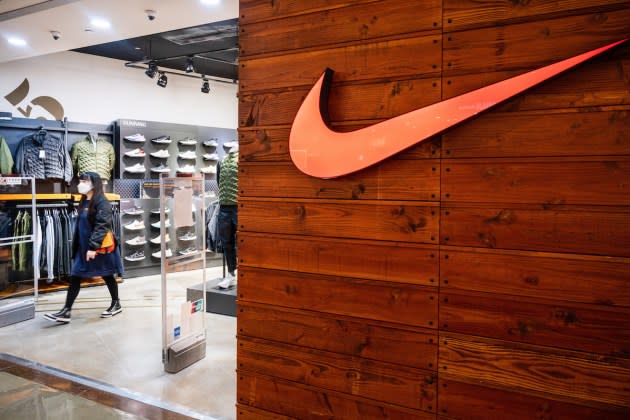Nike’s Trademark Infringement Lawsuit Against Bape Is Moving Forward

A New York federal judge’s decision to not dismiss the trademark infringement lawsuit that Nike has brought against Bape could have repercussions for other brands and companies that are safeguarding their designs.
In January 2023, Nike sued the Japanese streetwear company Bape for allegedly copying some of its sneaker designs, such as iterations of the Air Force 1, Air Jordan and Dunk.
More from WWD
A Bathing Ape was started in Japan in 1993 by Tomoaki Nagao, who is more commonly known as Nigo. The brand expanded into the U.S. about 10 years later. Its most popular style, the Bape STA, is among the designs that Nike has taken issue with in the lawsuit.
Insiders expect fashion and footwear brands to watch the case closely, as it relates to trade dress and intellectual property rights and, more specifically, brand identity and design protection.
“By declining to follow a pair of earlier cases that had required plaintiffs to be more specific about their trade dress claims, this court’s approach offered clarity and confidence to other trade dress owners, as well as an implicit reminder to all designers to be both verbally and visually specific when applying for trade dress registration,” said The Fashion Law’s founder Susan Scafidi on Tuesday.
Trade dress can be protected only if the owner can show the average consumer would be confused as to the origin of a product if another product appears in the same or similar packaging. While trade dress law protects the overall look and feel of a product or its packaging, trademark law protects logos, words, symbols, tag lines or names affiliated with a product or service.
Under the Lanham Act, the body of law that protects intellectual property rights, trade dress protects “the total image of a product including features such as size, shape, color or color combinations, texture, graphics or even particular sales techniques.”
Scafidi described Monday’s court order allowing Nike to proceed with its lawsuit against Bape as “a slam dunk not only for Nike, but for any brand whose designs are so recognizable that they can be registered as trademarks, even without their associated logos.”
Bape had argued that the case be dismissed because Nike had not described in detail what it had already proven to the U.S. Trademark Office, namely which elements of its iconic styles are distinctive and how they are distinctive, she said. “Instead, the court found that Nike’s ‘see attached’ approach, referencing its multiple trademark registrations and their detailed descriptions and images, fulfilled its obligation to state its claims clearly,” Scafidi said.
Allegations of Bape copying Nike’s Air Force 1 sneakers surfaced in 2009, but the company did not take any legal action until January of last year. Nike contacted and met with Bape at that time to address what it described as “Bape’s pirating of Nike’s iconic Air Force 1 design and to protect Nike’s intellectual property rights.” In March of last year, Bape filed a motion to dismiss the lawsuit in Manhattan federal court.
Scafidi speculated that as the lawsuit proceeds, “brand owners will also be watching how the fact that Nike didn’t sue Bape a decade and a half ago and instead waited until Bape’s imitation of Nike’s trade dress grew in frequency and volume may affect the outcome of the case. Even the largest labels can’t reasonably pursue every potential claim of trademark infringement every minute, but the sweet spot between waiting until a lawsuit is worthwhile and waiting too long is a matter of judgment — even if lawyers are eager to just sue it.”
Best of WWD

 Yahoo Movies
Yahoo Movies 